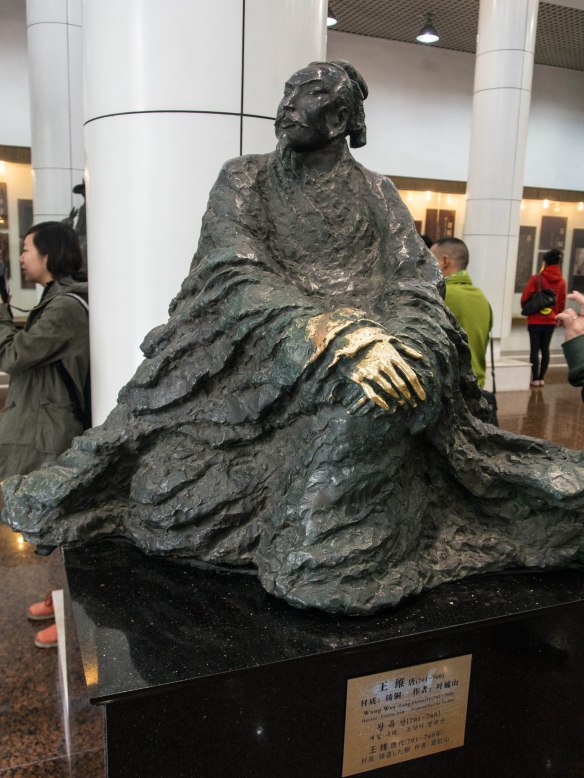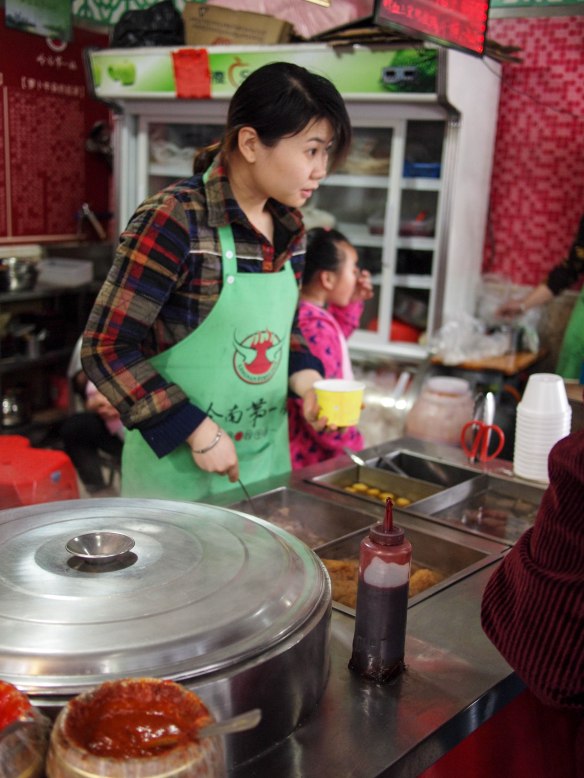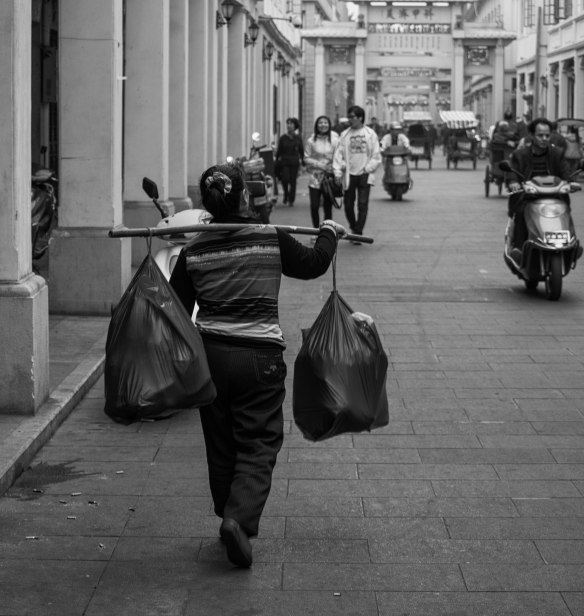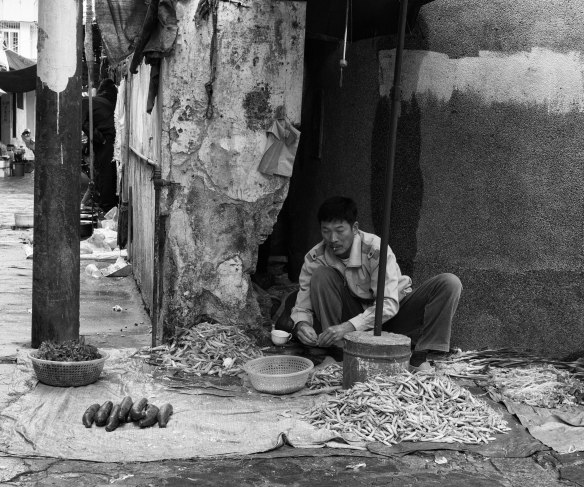
Starbucks, Macbook, young people.
China has changed immensely in the 25+ years I have been traveling there. When I first spent time in China as a study abroad student, everyone wore green or blue Mao suits, and everyone addressed everyone else as ‘comrade.’ Private enterprise was unknown and most cities literally shut down at 8:00 pm. There was very little Western influence. It was a very different time.
I recently spent time in Guangzhou, Chaozhou, Chengdu, Chongqing, Guiyang, and Kunming. Everywhere I went there was ample evidence of China’s growing middle class. People have money to spend and time to play. Luxury cars are everywhere, high end Western designer boutiques abound, and Chinese tourists are all over the place. And it isn’t just high ranking officials that are enjoying these things. There is a new middle class in China comprised of ordinary folks. Granted this middles class, in most cases, come from larger urban areas. There is still a significant wealth gap between urban centers and the countryside (but that’s a topic for another post).
Here are a few things the visitor to China will see as evidence of this rising middle class.
1. Luxury cars
On these last two trips alone I saw Bentleys, Mercedes, Porches, BMWs, Ferraris, Audis, and just about every other kind of luxury car. This was in addition to the countless Toyota Camrys, Honda Accords, and Volkswagon Passats. When I was first in China in the mid 80’s private cars were practically unknown, and the bike lanes were wider than the lanes for cars. Now every city in China is congested with cars and the bike lanes get narrower and narrower every year.

Study in contrasts.

Ferrari parked on the sidewalk in front of a high end seafood restaurant in Guangzhou.

Bentley

Porsche
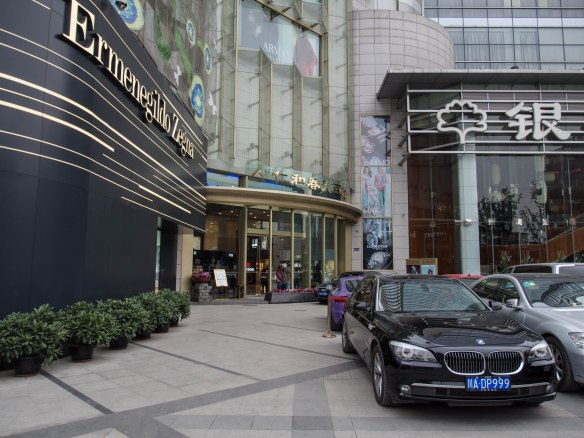
BMW
2. High end shopping malls
When I was a student in China my classmates and I would joke about going shopping for clothes in China. You would walk into the big state-run department store and say, “I’ll take a pair of the blue pants, the white shirt, and the belt.” Size didn’t matter because there seemed to be only one or two sizes. The belt fit the big guy pretty well, but the little skinny guy had the belt wrapped halfway around his waist again. There was not much selection and everyone dressed the same, men and women alike.
Now, every large-ish city has numerous high end shopping centers. Even the Chinese style department stores have an astonishing array of goods. But it is the Western designer boutiques that are really astonishing. And they are not just for decoration; these places are crowded with shoppers buying things. Some of the designers and other high end stores that have a noticeable presence in China include, Gucci, Zegna, Rolex, Tudor, Omega, Cartier, Louis Vuitton, Christian Dior, and so on.

Gucci

Dior girl

Cartier

Rolex

Omega boys

Shopping in Chengdu
3. Western restaurants and products.
Though we would never think of McDonald’s as a hip place to hang out in the U.S., it is just that in China. Eating Western food in China tells people you have money, you’re hip, and you’re international. Young people especially like to hang out, study, and talk business at places like Starbucks and McDonalds. These Western restaurants in China are big business. In 2010 the 100th McDonalds opened . . . in Shanghai. That’s right, there are now more than 100 McDonalds restaurants in Shanghai alone. The first Starbucks in China opened in Beijing in 1999. There are now 851 Starbucks in China. Starbucks believes China will be the second largest market after the U.S.

Starbucks

McDonald’s

School kids I met at a McDonald’s in Chaozhou. They said they liked to study there.

KFC is also immensely popular

iPhones and fake iPhones are everywhere, as our Apple stores.
4. Pets, especially dogs
In traditional China pets generally consisted of crickets and birds. Now everyone wants a dog, and there are dogs all over the place. The Chinese not only like to walk them, but they like to congregate in public squares where they can socialize and let their dogs play together. Though many people like small dogs, especially the puffy poodle types, I have also seen many large dogs including Huskies, Labs, Golden Retrievers, German Shepherds, and so on. Having a dog for a pet is a sign of affluence in China. It says, “Hey, I can not only feed myself and my family, but I can also feed a dog and I have time to take care of it.”

Walking the dogs in Chengdu

Doggie playtime in Chongqing

Dressed up in Guangzhou. Seriously??
5. Chinese tourists
In the past 10 years or so the Chinese have begun traveling. The Chinese middle class are the new tourists around the world and in China. It used to be the Japanese that you used to see all over in large groups, everyone with a large camera around their neck. Now it is the Chinese turn. They have taken to tourism in their own country in a big way. They are crowded all over the important cultural sites in China.
A quick story. Last year my son and I were on a week long bicycle tour. We were sitting in front of a small store in the tiny ranching town of Woodruff, Utah, near the Wyoming border. We had been riding all day and still had a few miles to go to our campground. As we were sitting there two brand new Dodge minivans pulled up and a dozen or so Asians poured out. I learned they were a group of friends from Shanghai. They had flown into Las Vegas, rented the cars, and were working their way through the Utah National Parks and were on their way to Yellowstone. I was really surprised, and I think they were a little taken back seeing a middle-aged guy wearing spandex in the middle of nowhere speaking Chinese with them.
The photos below are from an ancient town about 75 km outside Chengdu.
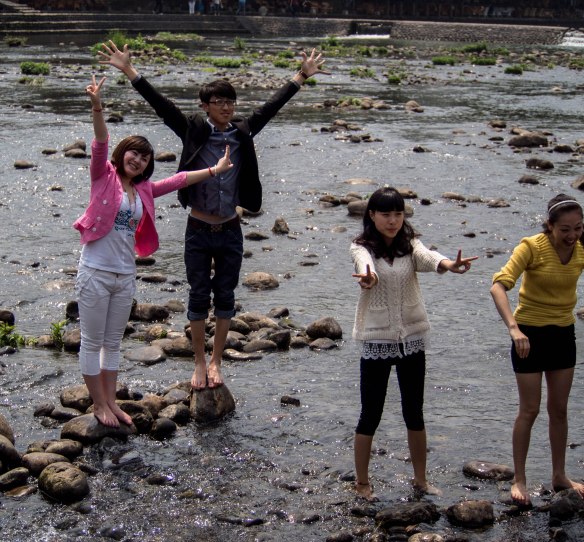
Chinese tourists getting their feet wet.

Hip young couple from Chengdu.

Strolling though the ancient village.
There is lots of other evidence of a wealth China as well. We saw one area in Chongqing where there were dozens of night clubs and dance clubs. On public squares kids flew kites, rode BMX bikes, and rollerblades. It’s getting harder and harder to see the old China; not impossible, you just have to look harder.

Dance club in Chongqing

Rollerblading in Guiyang

















